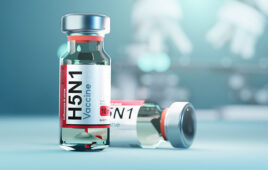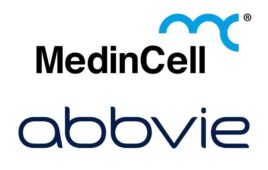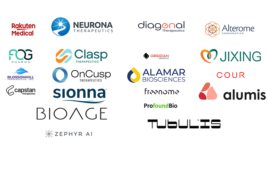Friso Postma, vice president of AI for drug discovery at BioXcel Therapeutics, prefers the term “augmented intelligence” to “artificial intelligence.” His company uses AI tools to support human experts in drug repurposing efforts. Postma, who holds a Ph.D. in signal transduction from the Netherlands Cancer Institute, transitioned to AI from wearable digital health devices. “I…
Top pharma companies ranked by 2023 R&D spend
[Updated with more comprehensive information on April 30, 2024] Which major pharmaceutical company leads the way in research and development? Data reveals that the top R&D spender in 2023 was Merck & Co., by a wide margin. While Pfizer had almost as much revenue as Merck ($60.1 billion vs. $58.5 billion), its R&D ratio was…
Real-world evidence use is expanding. What’s behind the change?
In the rapidly evolving landscape of drug development, real-world evidence (RWE) is making significant strides, finding its way into the early stages of the process. No longer confined to just the peri- and post-approval phases, RWE is now being tapped for external control arms (ECAs), aiding in health technology assessment (HTA), and informing payer discussions.…
Navigating the intersection of technology and human expertise in life sciences
In this age of rapidly evolving technologies that fundamentally shift the way businesses operate, such as large language models (LLMs) and natural language processing (NLP), organizations are quickly realizing that success extends beyond innovative technology solutions alone. While these technologies offer immense potential in terms of innovation, data insights and operational efficiency gains, constraints exist…
The 25 best-funded private healthcare and biotechnology companies of all time: From Altos to Theranos and beyond
In early 2022, secretive Altos Labs stunned with a record $3 billion launch to pursue anti-aging “cellular rejuvenation” amid rumors of Jeff Bezos’ backing. But a roundup of the 25 private healthcare and biotech companies that raised the most money in recent decades reveals a landscape of grand ambitions to disrupt healthcare. There are also…
Xaira’s $1 billion launch one of the biggest recent biotech funding rounds
The same week that BenevolentAI announced it was cutting 30% of its staff, AI-focused biotech Xaira Therapeutics debuted with a $1 billion funding round with little precedent in healthcare over the past year — or beyond that. A survey of the biggest fundraising rounds over the past year revealed that the absolute largest investments were…
From Novartis to Pfizer: A closer look at novel cell and gene therapy pricing and reimbursement strategies
Cell and gene therapies are upending the treatment of a growing number of diseases by addressing the underlying causes of genetic disorders. Yet the high costs associated with these therapies, sometimes costing multiple millions of dollars for a single treatment, pose significant challenges for patients, payers and healthcare systems. To address this matter, a growing…
With prices topping $4 million, high stakes define cell and gene therapy landscape
Cell and gene therapies often promise unparalleled treatment options for patients, but sometimes those benefits come at an extraordinary cost. The therapy class is responsible for the world’s most expensive drugs, including the recently FDA-approved gene therapy, Libmeldy, with a wholesale acquisition cost of $4.25 million. The prior record holder, Hemgenix, had a $3.5 million…
The $5-7B generative AI opportunity biopharma can’t afford to ignore
Yes, generative AI is hyped. And yes, the technology has shortcomings. But the landscape is swiftly changing. Bloomberg Intelligence estimated that the GenAI market would grow from $40 billion in 2022 to $1.3 trillion by 2032. A recent study from Deloitte Consulting estimates that for a top 10 biopharma company with $65-75 billion in revenue,…
Demystifying deep learning: An accessible introduction to neural networks in health research and epidemiology
As machine learning and deep learning technologies advance thanks to advances in computation, algorithms and data availability, the possibilities of the technology continue to expand in medicine. While these AI-driven approaches have real potential, such systems demand large volumes of representative data, careful privacy and security scrutiny and thoughtful long-term strategic planning. In this Q&A, Kathryn…
Layoff tracker: Mapping the 11,350-plus biotech and pharma layoffs in early 2024
[Updated on April 29, 2024] While a number of biotech startups continue to attract healthy funding amounts, the biotech sector continues to see a significant number of layoffs in 2024 with major cuts hitting firms like Amylyx Pharmaceuticals, Novartis, Genentech and Sanofi. Bristol Myers Squibb (BMS) announced one of the largest workforce reductions of the…
Public vs. private: Who’s leading the charge in H5N1 preparedness?
The recent emergence of H5N1 avian influenza in humans and many other animals has intensified global efforts to prepare for a potential pandemic. Public health agencies and international organizations are collaborating with pharmaceutical companies and academic institutions to develop vaccines, treatments, and strategies to mitigate the impact of an outbreak. The CDC, for instance, has…
FDA approves pair of therapies for rare pediatric cancers: Novartis’ Lutathera and Day One’s Ojemda
The FDA has signed off on two novel therapies targeting rare pediatric cancers. Novartis’ Lutathera targets aggressive gastroenteropancreatic neuroendocrine tumors (GEP-NETs) in children 12 and up, while Day One Biopharma’s Ojemda (tovorafenib) tackles treatment-resistant BRAF-mutated relapsed or refractory pediatric low-grade glioma (pLGG) with a BRAF fusion or rearrangement, or BRAF V600 mutation These approvals offer…
Rilzabrutinib on track for regulatory filing after ITP trial win
Sanofi revealed that its investigational BTK inhibitor rilzabrutinib notched a significant win in the LUNA 3 phase 3 study, hitting the primary endpoint of durable platelet response in adults with persistent or chronic immune thrombocytopenia (ITP). The study showed a significantly higher proportion of rilzabrutinib-treated patients achieved the platelet response goal compared to placebo in…
New pharma and biotech manufacturing facilities and expansions announced worldwide for 2024
[Updated April 23, 2024] In the face of rising R&D costs and growing pricing pressures from payers, the pharma and biotech sectors continue to transform to adapt to an evolving landscape. While workforce reductions persist in 2024 for some companies, major players like AbbVie, AGC Biologics, Amgen, Novartis and Thermo Fisher Scientific are demonstrating confidence…
Study combines biomimetic AI, digital twins and multiomics to unveil potential genetic drivers of endometriosis
Endometriosis, a condition where endometrial tissue grows outside the uterus, has a strong genetic underpinning. A new study published in the Journal of Molecular Diagnostics sheds light on this connection. Researchers from a team including Genzeva, LumaGene, RYLTI Biopharma, Brigham & Women’s Hospital of Harvard University and QIAGEN Digital Insights used a unique approach in…
How the FDA approval of J&J’s Opsynvi could simplify treatment and improve outcomes for PAH patients
Pulmonary arterial hypertension (PAH), a rare, progressive and life-threatening blood vessel disorder, affects some 500 to 1,000 new patients each year in the U.S. FDA recently approved Opsynvi, a first-of-its-kind once-daily single-tablet combination therapy from Johnson & Johnson. “With this approval, our portfolio now includes treatments that address all three guideline-recommended pathways,” said a J&J…
Medincell, AbbVie partner on long-term injectable therapies
Medincell and AbbVie today announced a collaboration to co-develop and commercialize up to six therapeutic products across several areas. The partnership spans multiple therapeutic spaces and indications. Under the agreement, Medincell will use its commercial-stage, long-acting injectable technology platform to formulate innovative therapies. It plans to conduct formulation activities and preclinical studies, including supportive CMC…
ten23 health to develop large-volume injectables for Ypsomed’s YpsoDose
Ypsomed announced today that it entered into a partnership with ten23 health to develop therapeutics for the YpsoDose wearable injector. Burgdorf, Switzerland-based Ypsomed designed YpsoDose for the subcutaneous self-injection of large-volume doses. ten23 health, a Swiss CDMO, offers drug development, filling and device assembly expertise to contribute to the product offering. The strategic collaboration sees…
How tailored qPCR assays can unlock microbiome and precision medicine potential
Sponsored by Diversigen, Inc. Download the free guide now to learn how to improve results.
The rise of ‘Ozempic babies’ and the uncharted territory of semaglutide in pregnancy
Ozempic, Rybelsus and Wegovy have transformed the diabetes and weight loss treatment landscape, but when it comes to the impact of their active ingredient, semaglutide, on fetal development, “the answer is we do not know,” said Dr. Marijane Hynes, clinical professor of medicine at the George Washington University School of Medicine and Health Sciences. Hynes…
As biotech struggles, Big Pharma spends and trims workers
Many smaller biotech companies continue to face a cash crunch as a result of a challenging funding climate and a difficult IPO market. In the past couple of years, many smaller biotechs are running out of cash and being forced to cut jobs or shut down entirely. Median deal sizes for seed, Series A and Series B rounds…
20 biotech startups attracted almost $3B in Q1 2024 funding
The top 20 healthcare-focused biotech companies collectively raised $2.9 billion in the first quarter of 2024, according to data sourced from Crunchbase. That represents a 161% increase compared to the $1.1 billion raised by the 20 largest funding rounds involving healthcare-focused biotech companies in Q1 2023, indicating more confident bets on the market viability of…
Global biotech VC trends in Q1 2024
The first quarter of 2024 saw a flurry of funding activity in the biotech sector, with early-to-mid-stage companies attracting most of the investment dollars. Among the most notable late-stage deals was blood-based cancer diagnostics firm Freenome‘s $254 million Series E round. The South San Francisco-based company, which is developing a platform for early cancer detection…
Machine learning model forecasts Lilly’s Mounjaro sales to triple in 2024
Novo Nordisk has received a considerable amount of attention for its meteoric growth of late, but Eli Lilly isn’t far off in that domain as of late. Lilly recently topped the S&P 500 healthcare index in terms of growth, jumping almost 34% as demand for its metabolic therapies surge. Last year, Lilly projected it would…
























